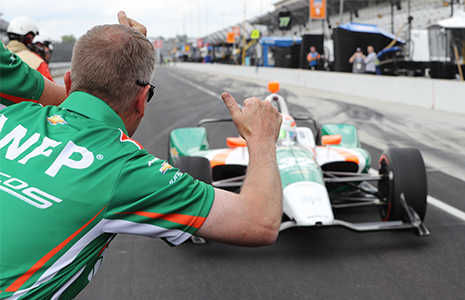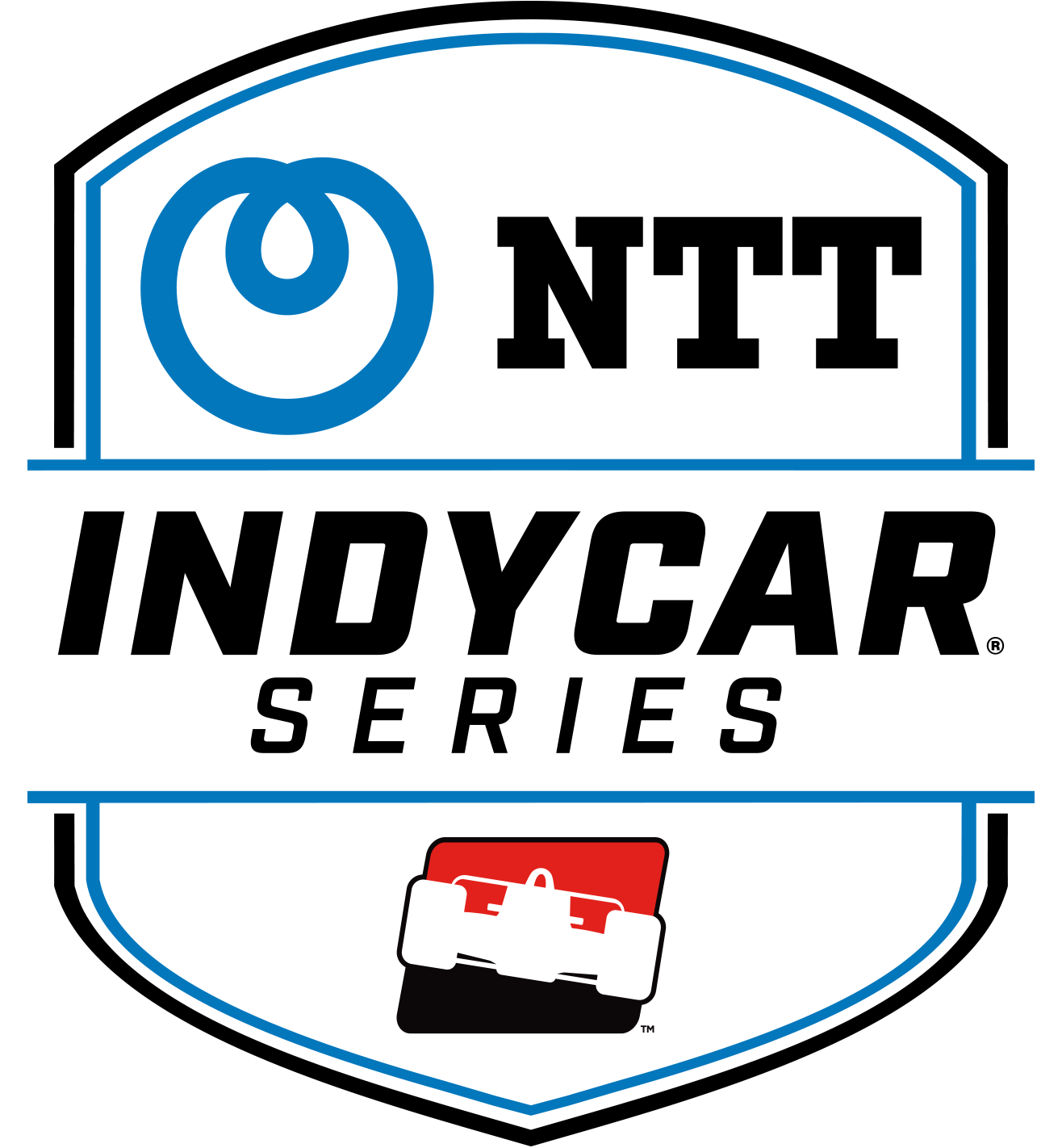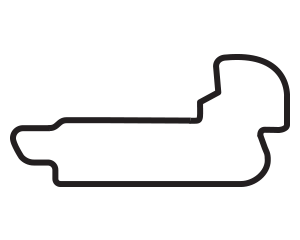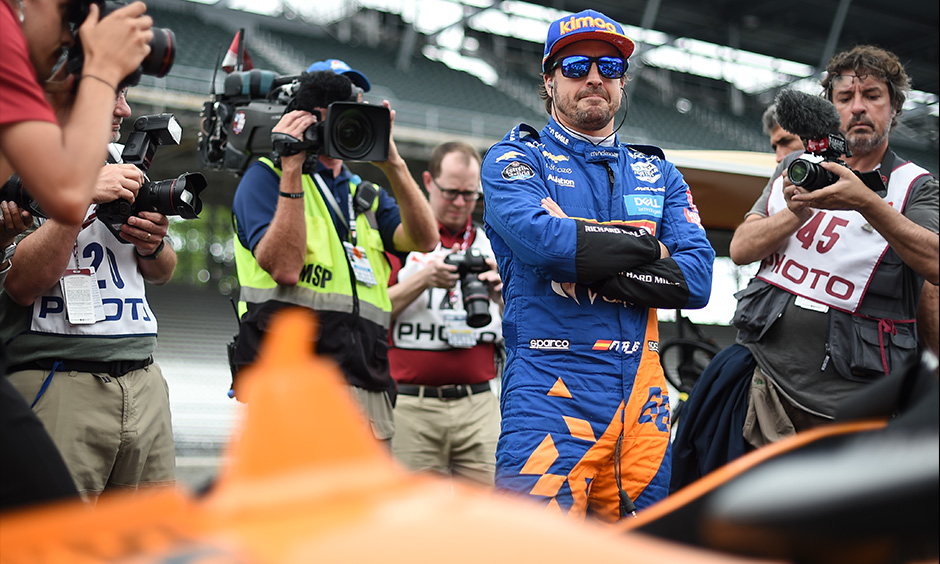Kaiser's unexpected speed guns down Alonso in Last Row Shootout
MAY 19, 2019
INDIANAPOLIS – For a moment, the mood surrounding Fernando Alonso had lightened from previous days at Indianapolis Motor Speedway.
His qualifying run completed Sunday, Alonso signed autographs and took selfies with fans – even chatted with an Indiana state trooper – and appeared ready to accept the 33rd and final starting position for the 103rd Indianapolis 500 presented to Gainbridge.
 Then, with one unexpectedly strong four-lap run by a 23-year-old with just five NTT IndyCar Series races on his resume, it all crashed again.
Then, with one unexpectedly strong four-lap run by a 23-year-old with just five NTT IndyCar Series races on his resume, it all crashed again.
Kyle Kaiser, the final driver to qualify in the Last Row Shootout, knocked Alonso out of the Indy 500 with a four-lap average of 227.372 mph. That was just 0.019 mph faster than Alonso’s average but enough to end the two-time Formula One champion’s effort to compete in the race.
Kaiser wasn’t sure if he’d made it into the field when he crossed the start/finish line on his fourth lap, but he interpreted the screaming he heard over the radio as a positive sign.
“It was pretty wild,” Kaiser said. “I didn’t really know right away. Everybody keeps asking me, ‘When did you know?’ I had no idea. I had somewhat of an idea because I got to see the laps. I heard it was really close. I came across start/finish and the first thing I asked was, ‘Are we in? Did we make it?’ I just heard screaming. That was a good sign.”
Six drivers battled for the final three positions in the May 26 race during Sunday’s Last Row Shootout. James Hinchcliffe went out first, establishing 227.543 mph as the average to beat. After Max Chilton turned four laps at 226.192 mph, Alonso was clocked at 227.353 mph in the No. 66 McLaren Racing Chevrolet, temporarily good for 32nd place.
That’s when the unexpected happened. Sage Karam, who struggled to find speed and comfort throughout the week of practice leading up to qualifying, was clocked at 227.740 mph – nearly 1 mph faster than his best attempt during Saturday’s first round of qualifying. That put him in 31st place, moving Hinchcliffe to 32nd and Alonso to 33rd with two drivers – Patricio O’Ward and Kaiser – still to qualify.
O’Ward’s 227.092 mph average wasn’t enough to bump Alonso, leaving it to Kaiser, an unlikely upset possibility. He’d crashed in practice Friday, was driving a hastily prepared backup car last used on a road course, hadn’t topped 226 mph during Saturday’s session and didn’t practice Sunday morning.
But, as Alonso watched intently from the pits while surrounded by photographers, Kaiser charged ahead with the four most important laps of his career.
The first lap – 227.720 mph – made it clear that Kaiser and his No. 32 Juncos Racing Chevrolet had a chance at a monumental upset. He followed it with laps of 227.420 mph and 227.239 mph, leaving it to the final 2.5 miles around Indianapolis Motor Speedway to decide the fate of two drivers.
 His final lap of 227.109 mph gave Kaiser a four-lap time of 2 minutes 38.3311 seconds, just 0.0129 of a second better than Alonso for the 10-mile qualifying run. On pit lane, a raucous celebration erupted among exhausted Juncos crew members.
His final lap of 227.109 mph gave Kaiser a four-lap time of 2 minutes 38.3311 seconds, just 0.0129 of a second better than Alonso for the 10-mile qualifying run. On pit lane, a raucous celebration erupted among exhausted Juncos crew members.
“The last 48 hours have been an absolute whirlwind,” Kaiser said. “It’s been crazy. We had really good pace with our main car, but obviously we had an incident. It’s been an uphill battle since then. I have to give the team pretty much all of the credit here. They’ve been working super-long hours. They worked 40 straight hours to put that car together.”
Alonso, who also drove a backup car after a crash during Wednesday’s practice, watched Kaiser’s final lap, turned and quickly walked with McLaren principal Zak Brown toward a golf cart.
“I’m disappointed,” Alonso said later. “It would be nice to be in the race next Sunday. We were here to race and to challenge ourselves, and we were not quick enough. I congratulate all the other guys who did a better job. Hopefully we’ll see a nice show next Sunday and everyone’s safe. (I’ll) enjoy it from the TV, unfortunately.”
Juncos Racing, led by former Formula Renault driver Ricardo Juncos, is in its third season in the NTT IndyCar Series, with just 14 races to its credit. McLaren, on the other hand, is an international racing institution with 53 years in Formula One, including 182 race wins and 12 F1 driver’s championships.
When Kaiser crashed Friday, Juncos considered withdrawing from the event.
“That was a big, big moment,” Juncos said. “My first thought was, ‘We just need to go home because there’s no way we can get back from this situation.’”
Instead, his crew hastily put together a road-course chassis, skipping a Sunday morning practice session before the Last Row Shootout, which was delayed because of rain by more than four hours – giving the team more time to prepare.
Juncos credited the decision to forego the practice session with giving the team enough time to prepare a car capable of making it into the race.
“That was a key decision because it gave us another four or five hours to work on the car,” Juncos said. “We probably wouldn’t be here (without) that.”
McLaren sporting director Gil de Ferran, who won the 2003 Indy 500, apologized in a press conference following Sunday’s qualifying, which ended with Simon Pagenaud winning the pole position for the race in the Fast Nine Shootout.
“I want to apologize to you, as well,” de Ferran said, turning to Alonso. “We didn’t give you a car that was fast enough. You drove like the champion that we know you are. Particularly the last three days have been incredibly tense and difficult, and we couldn’t have asked anything more from you, Fernando. I’m sorry, man. You’re an amazing driver. In my 35 years of racing … this has been the most painful experience I’ve ever had.”
The 33-car field is the closest in Indy 500 history, separated by just 1.8932 seconds from fastest to slowest. In the end, one of the most storied teams and drivers in motorsports history was sidelined by slightly more than one-hundredth of a second.
“It was a combination of things,” Alonso said. “We were not fast – not only today, but the whole event we were struggling a little bit.”






















